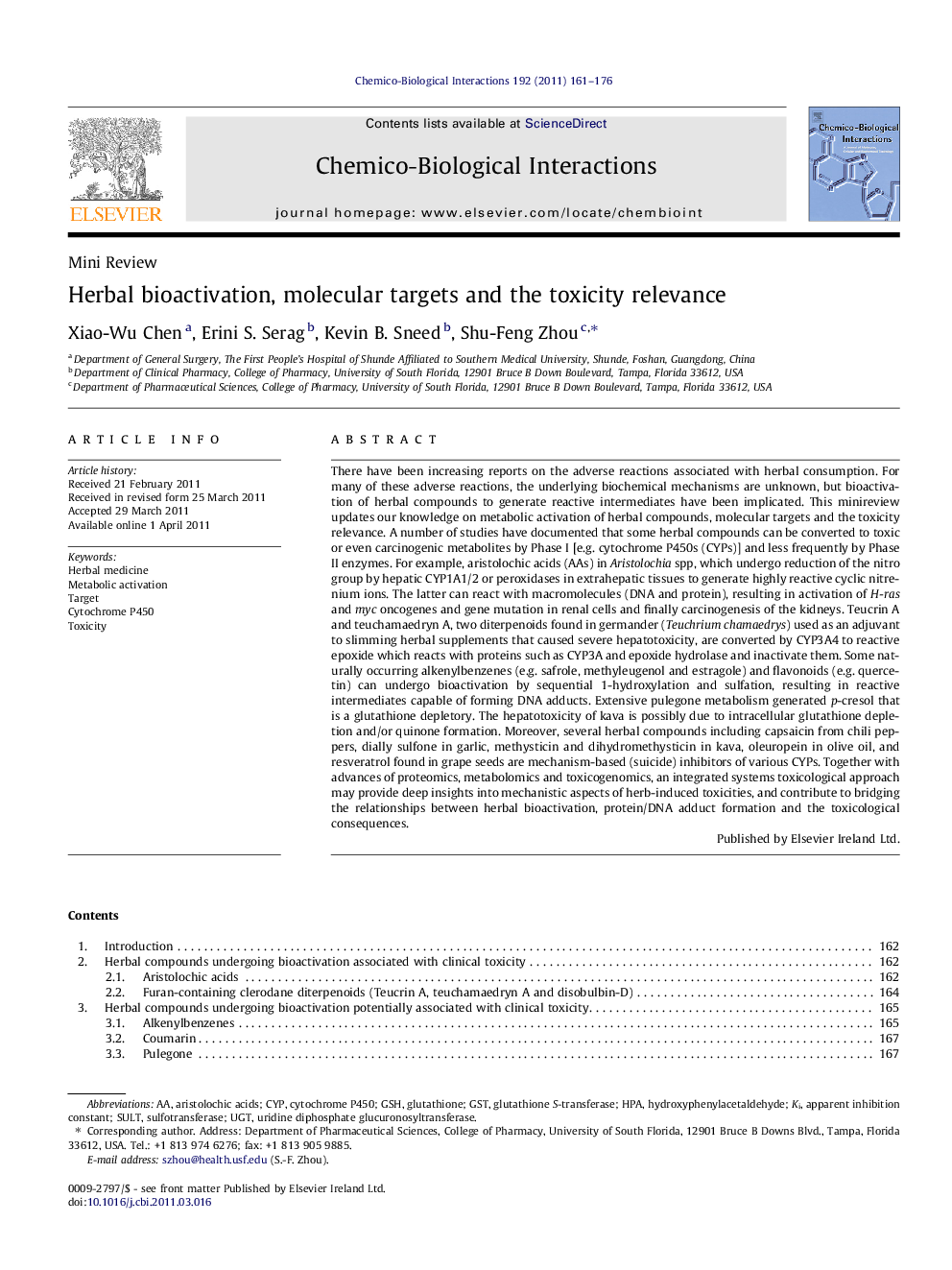| کد مقاله | کد نشریه | سال انتشار | مقاله انگلیسی | نسخه تمام متن |
|---|---|---|---|---|
| 2580886 | 1130164 | 2011 | 16 صفحه PDF | دانلود رایگان |

There have been increasing reports on the adverse reactions associated with herbal consumption. For many of these adverse reactions, the underlying biochemical mechanisms are unknown, but bioactivation of herbal compounds to generate reactive intermediates have been implicated. This minireview updates our knowledge on metabolic activation of herbal compounds, molecular targets and the toxicity relevance. A number of studies have documented that some herbal compounds can be converted to toxic or even carcinogenic metabolites by Phase I [e.g. cytochrome P450s (CYPs)] and less frequently by Phase II enzymes. For example, aristolochic acids (AAs) in Aristolochia spp, which undergo reduction of the nitro group by hepatic CYP1A1/2 or peroxidases in extrahepatic tissues to generate highly reactive cyclic nitrenium ions. The latter can react with macromolecules (DNA and protein), resulting in activation of H-ras and myc oncogenes and gene mutation in renal cells and finally carcinogenesis of the kidneys. Teucrin A and teuchamaedryn A, two diterpenoids found in germander (Teuchrium chamaedrys) used as an adjuvant to slimming herbal supplements that caused severe hepatotoxicity, are converted by CYP3A4 to reactive epoxide which reacts with proteins such as CYP3A and epoxide hydrolase and inactivate them. Some naturally occurring alkenylbenzenes (e.g. safrole, methyleugenol and estragole) and flavonoids (e.g. quercetin) can undergo bioactivation by sequential 1-hydroxylation and sulfation, resulting in reactive intermediates capable of forming DNA adducts. Extensive pulegone metabolism generated p-cresol that is a glutathione depletory. The hepatotoxicity of kava is possibly due to intracellular glutathione depletion and/or quinone formation. Moreover, several herbal compounds including capsaicin from chili peppers, dially sulfone in garlic, methysticin and dihydromethysticin in kava, oleuropein in olive oil, and resveratrol found in grape seeds are mechanism-based (suicide) inhibitors of various CYPs. Together with advances of proteomics, metabolomics and toxicogenomics, an integrated systems toxicological approach may provide deep insights into mechanistic aspects of herb-induced toxicities, and contribute to bridging the relationships between herbal bioactivation, protein/DNA adduct formation and the toxicological consequences.
Journal: Chemico-Biological Interactions - Volume 192, Issue 3, 15 July 2011, Pages 161–176